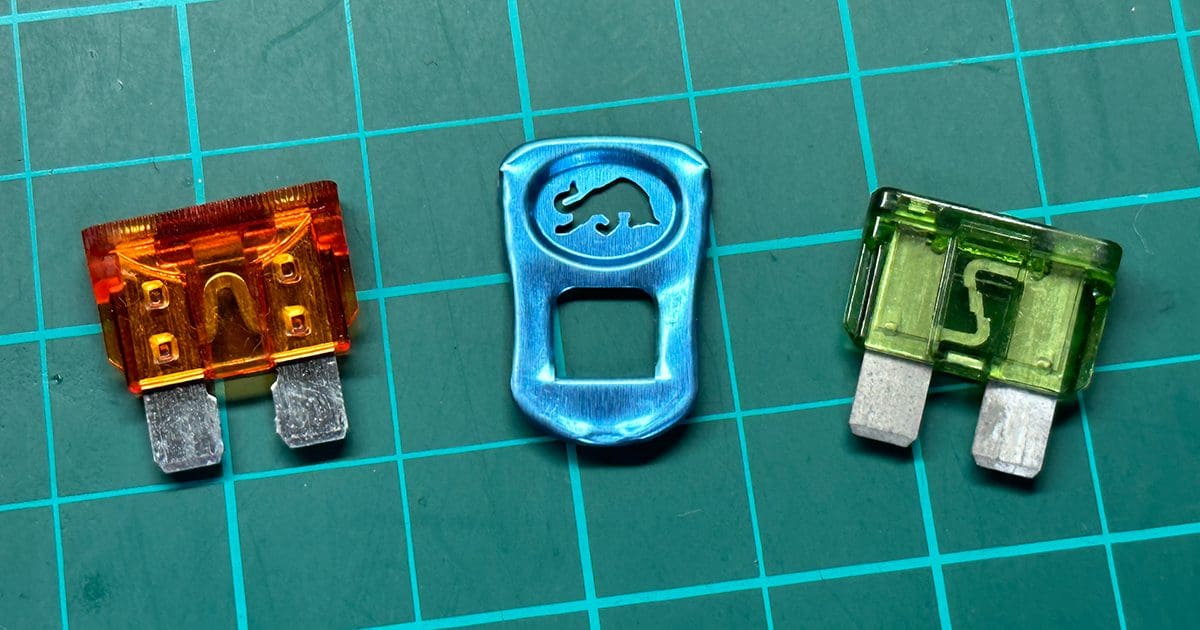If you spend time on social media, you’ve likely seen examples of incorrect devices being used in home and car audio fuse holders. Photos of a .22 round in a fuse holder, pieces of bubble gum wrappers wrapped around a blown AGC fuse and, my personal favorite, the Red Bull can tab intended for use as a replacement for an ATC fuse all send shivers up my spine. There are even industrial examples with screwdrivers and sockets used in industrial switchgear. The Red Bull image prompted this article, and you guessed it, that’s what we’re going to test!
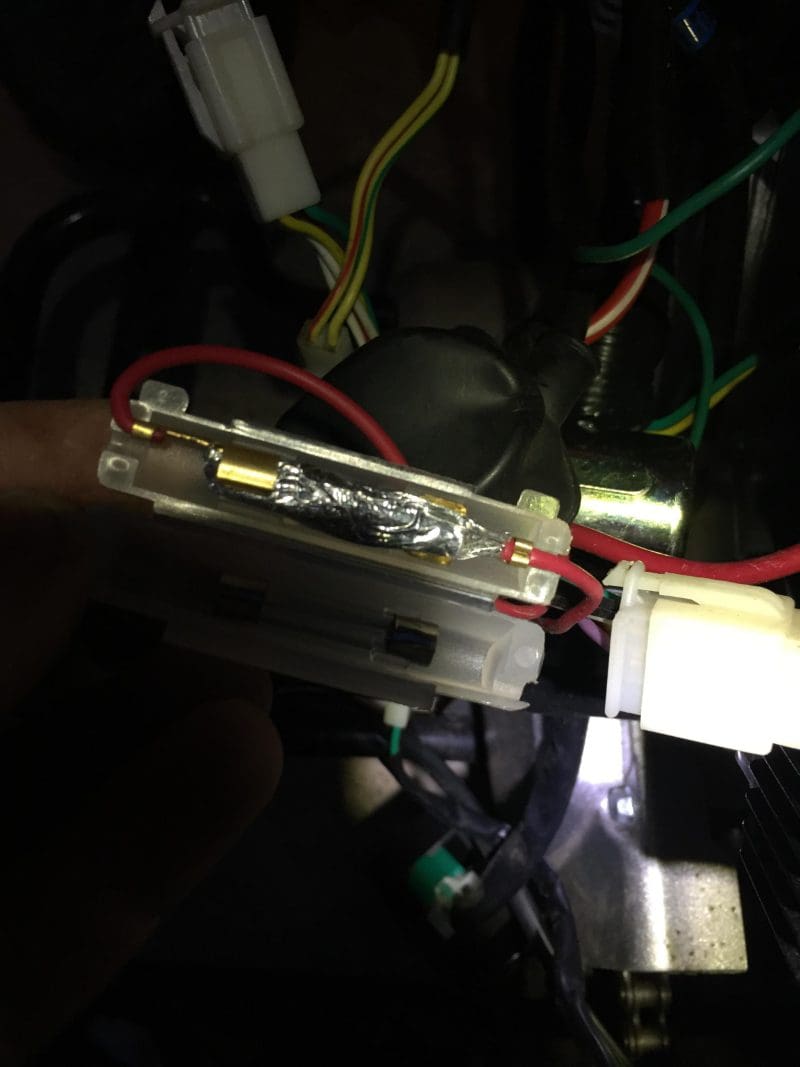
Image credit: Reddit user updownansideways
Why Automotive Audio and Accessory Upgrades Need Fuses
I’ll start by saying that in most cases, in radio, amplifier, CB radio, radar detector or lighting upgrades, fuses aren’t there to protect the device from damage. The fuses protect the vehicle’s wiring if a failure results in a short circuit. If a component fails and shorts, the device could draw enough current to melt wiring in the car or start a fire. When a power wire is connected directly to a battery, a fuse must be added to protect that battery if the wire shorts to the chassis. If the wire isn’t run safely and properly protected, this could result in a short. If the vehicle is in an accident and the wire is pinched, that could also result in a short.
How Does a Fuse Work?
Before I get to our test, I should explain how a fuse works. We need to know a few key things to understand the explanation. First, energy is transformed (or wasted) into heat when current flows through a resistor or resistance. The heat a resistor generates equals the square of the current times the resistance. The exact formula is (IxI) x R, where I is current flow in amperes and R is resistance in ohms. This calculation gives the amount of energy (in watts) dissipated by the resistance. So, small increases in current result in significant increases in heat generation.
Fuses rely on heat to melt a conductor of a specific size and material. This applies to the small link between the tabs of an ATC fuse or the wire between the ends of a glass AGU or AGC fuse. Even the fuses used to protect the feed from a high-voltage power line at the side of the road to a transformer are protected by a fuse.
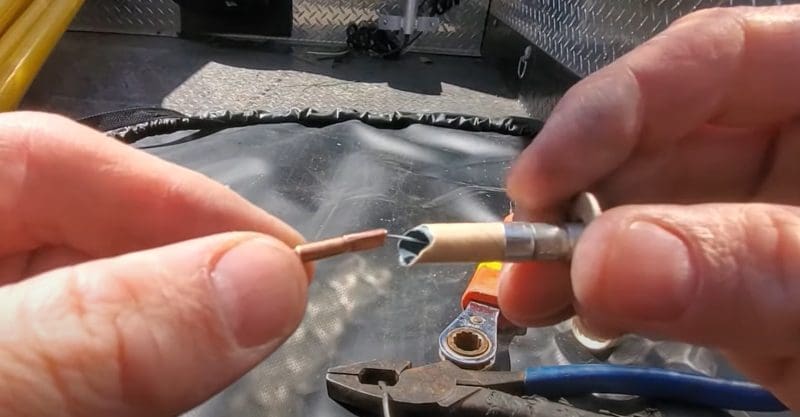
Image Credit: Youtube Channel: Bobsdecline – Lineman blogger
Second, all conductors have some amount of resistance. A piece of all-copper, full-AWG (American Wire Gauge) spec 6-AWG wire should have a nominal resistance of 1.39 milliohms per meter. An 18-AWG conductor that might be used to power a basic car radio is around 22.58 ohms per meter. If you have a piece of 18-AWG that’s 1 meter long and there are 10 amps of current flowing through it, the wire will produce 2.248 watts of heat, and there will be a voltage drop of 0.2248 volt across the length of the wire. If the current is increased to 15 amps, the power wasted jumps to 5.058 watts and the voltage to 0.3372 volt.
Let’s do a little experiment to quantify this. I connected a piece of 18-AWG wire to my small adjustable voltage power supply and set the current to 5 amps. The wire warmed from room temperature of 66 degrees to about 80 degrees before stabilizing. This seems quite reasonable, and there’s no danger of melting the jacket on the wire. Mathematically, this should be about 0.56 watt of power. Next, I increased the current through the wire to 7.5 amps, which works out to 1.26 watts. After a few minutes, the wire was sitting at 87 degrees. It wasn’t hot to the touch, but you could feel the warmth. I don’t think I’d want to pass much more than 10 amps of current through an 18-AWG conductor for fear of it getting hot.
What Is a Fuse?
A fuse is a current-limiting device that will open when too much current passes through it. This current flowing through a controlled resistance creates the heat that melts the conductor (in the fuse) and opens the circuit. The component or link in the fuse that heats up will have a particular cross-sectional area and be made of a carefully chosen material. The specific resistance causes enough heat for the link to melt at a particular temperature.
Testing the Red Bull Can Tab
OK, let’s take a look at our Red Bull can tab. The first thing we need to know is that there’s a coating on the tab that isn’t conductive. The tab is aluminum, but it’s not bare aluminum. Just like the inside of a pop can, it has received a water-based varnish that prevents corrosion. For this test, I didn’t remove the coating … as the chances are good that someone who thinks of using a can tab as a fuse likely won’t consider this, either.
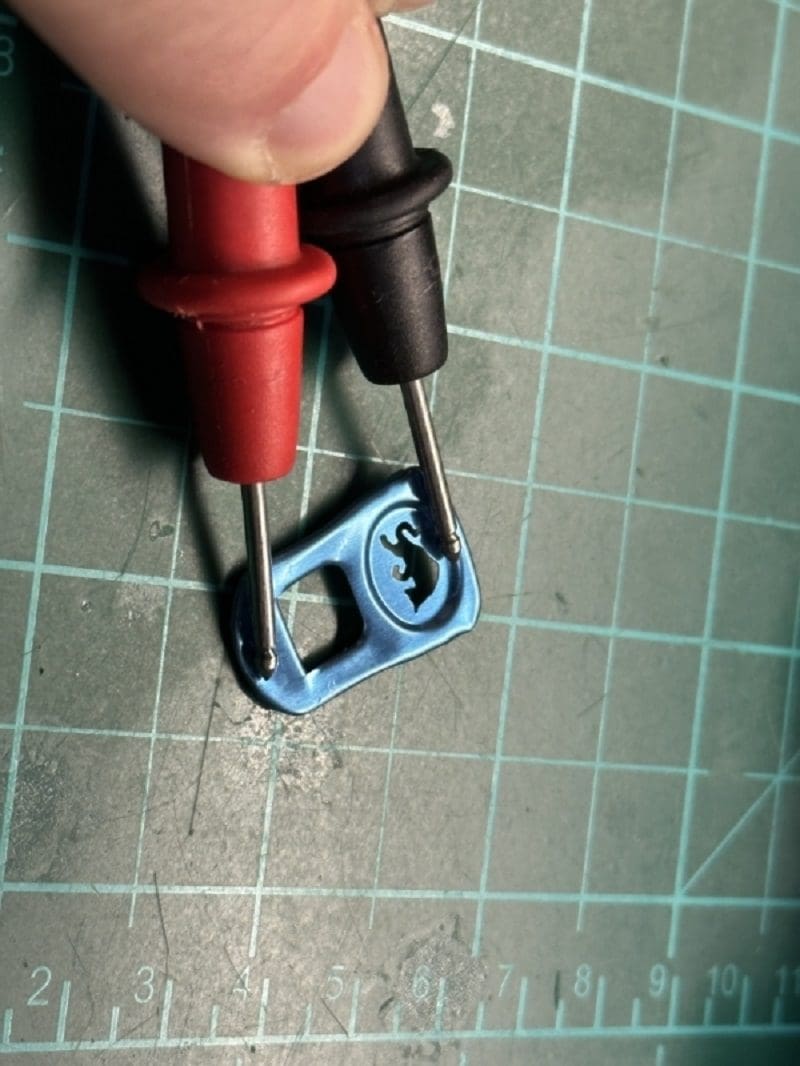
I wired up an older (but still amazing) 1,500-watt Class GH subwoofer amp on my bench and connected a 10-AWG fuse holder to the terminals of a MINI-ANL fuse holder wired to the positive input. To ensure that everything was working as I had hoped, I made preliminary current flow and voltage drop measurements using a 40-amp ATC fuse. Those measurements told me that the fuse and holder have a resistance of about 0.0037 ohm.
I took a few thermal images of the fuse holder before I switched to the tab. Drawing only 30 amps of current, the fuse had risen to over 130 degrees Fahrenheit. Remember, for the fuse to “blow,” it needs to melt the metal link between the two tabs that connect to the fuse holder.
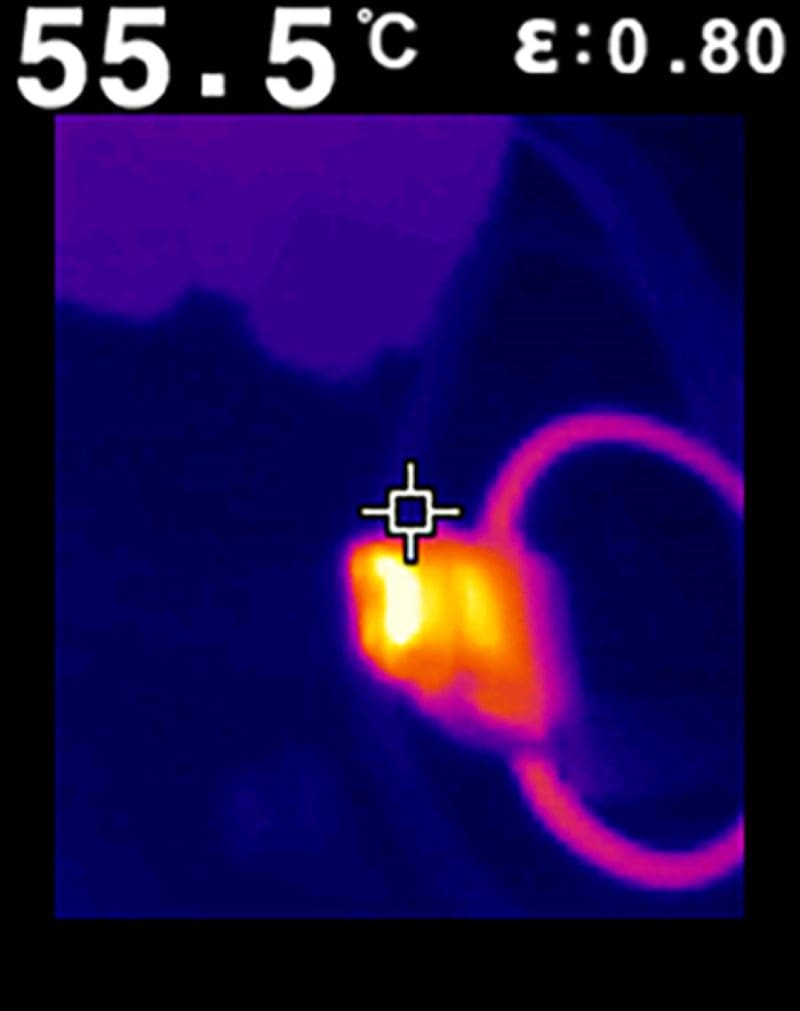
Satisfied with my baseline measurements, I removed the ATC fuse and inserted the Red Bull can tab. The fuse holder had enough tension to scrape through the varnish so that it made an electrical connection. I repeated the current flow and voltage drop measurements to see how this compared with the 40-amp fuse. I noticed immediately that the resistance was slightly less at 0.00366 ohm. This told me I should see a similar amount of heat as I increased the current. Up at 30 amps, the resistance was slightly higher at 3.81 milliohms. This is something else to remember: Resistance increases with temperature. It happens in all materials and conductors.
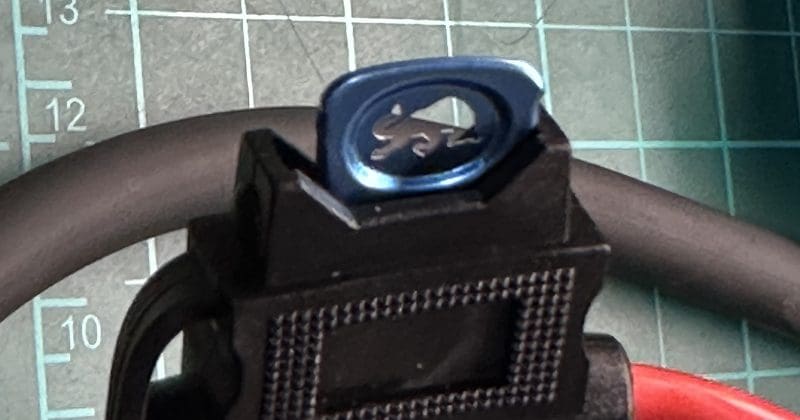
Let’s Get Silly with Power!
I turned the amp’s output up to draw 60 amps of current. The can tab kept doing its thing and passing electrons. The voltage drop across the fuse and holder was now 0.259 volt, and the resistance had jumped to about 4.3 milliohms. After a few minutes at this power level, I knew things were starting to go sideways. I had no expectations that the can tab would fail unless I passed an extreme amount of current through it. Not wanting molten aluminum spread all over the lab, I didn’t go crazy with the current. However, I let it simmer for a while at 60 amps, and as expected, it got hotter and hotter.
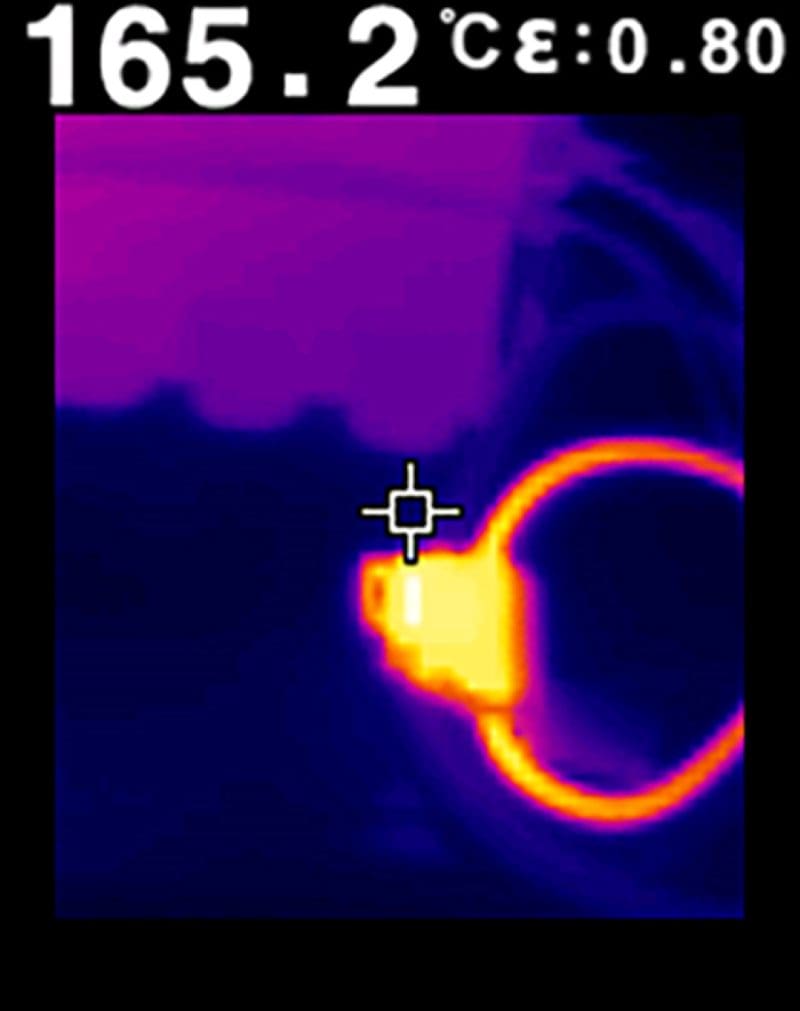
Here’s where the fun started. The fuse holder started smoking and began melting. I decided a little video of the event might be fun.
This type of fuse holder isn’t rated for this much current. With that said, it was not the wire that was getting hot. It was the connection between the can tab and the terminals. Second, I chickened out and didn’t continue turning up the current. If you push it hard, I know this amp can draw over 180 amps.
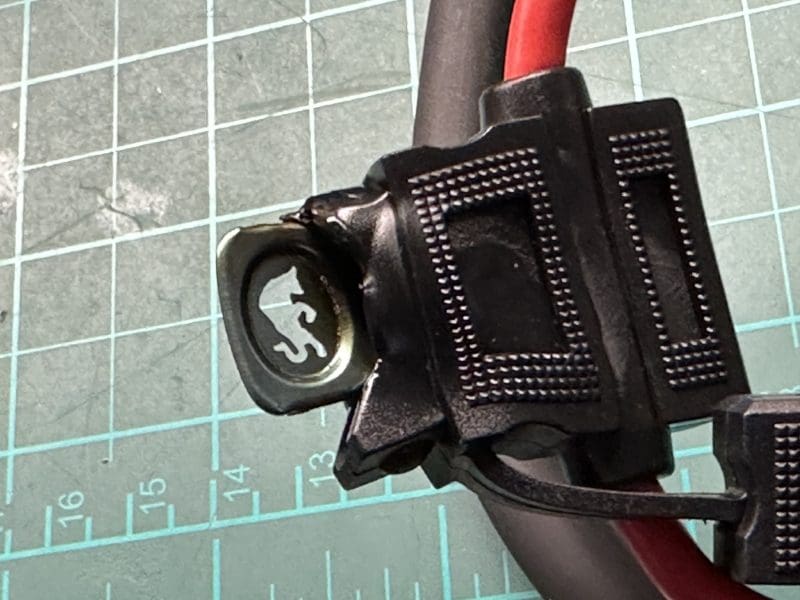
Don’t Use Fuses that Aren’t Fuses
The takeaway from this experiment is that the Red Bull can tab isn’t a fuse. It isn’t designed to do anything other than be rigid enough to let you open your heavily caffeinated beverage. Does it conduct electricity? Most definitely! Will it protect your vehicle in the event of an over-current condition? Absolutely not! Should you use one as a replacement for a fuse? Not unless you know why the original fuse blew. Even then, only use it until you can get a proper fuse with the correct rating. Fuses NEVER blow without reason. Something caused an increase in current that blew the fuse. If you replace it with something that won’t blow, you are begging for trouble. Better yet, don’t use a can tab as a fuse. Almost every gas station or convenience store will have fuses. Many cars come with extra fuses. Buy a pack of fuses and put them in your glove box. Please!
If you’re having trouble with a fuse blowing in your car or truck, drop by a local specialty mobile enhancement retailer and ask about booking an appointment to check your vehicle.
